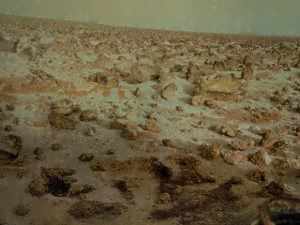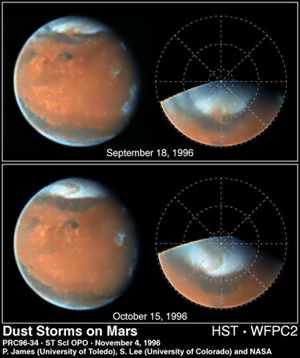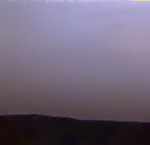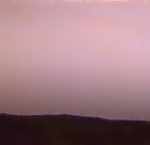|
Does Mars have the right atmosphere?
Why is Mars called the Red Planet, when it is orange and brown?
 We think it is probably because the colour we call red now is different from the colour our ancestors called red. After all, we have red-headed people, red deer, red squirrels and red kites. All these refer to colours that we would now call brown or even orange. In the past our ancestors probably called this colour scarlet and this colour was red. We think it is probably because the colour we call red now is different from the colour our ancestors called red. After all, we have red-headed people, red deer, red squirrels and red kites. All these refer to colours that we would now call brown or even orange. In the past our ancestors probably called this colour scarlet and this colour was red.
Is the air on Mars alright to breath?
No, it is mainly made of carbon dioxide (95%), with traces of nitrogen, argon and other gasses in it. It is also very thin. In fact it is as thin as the Earth's air at a height of 30,000 metres (100,000 feet).
What is the weather like here? Is it like Earth?
Well, quite simply, it is cold and dry. It never rains and from time to time there are very strong winds.
How cold?
If we put figures to it, a nice hot summer's day at the equator on Mars is going to be around freezing point.
But does it ever get hotter?
Yes, the maximum can be around 20 C (70 F), but that is rare.
What about at the poles?
At the poles temperatures can fall to 125 C (166 F) below zero in winter! What's more, winter on Mars lasts a lot longer than it does on Earth, because Mars is farther from the Sun and takes a lot longer to go around the Solar System.
If it doesn't rain why does Mars have icecaps?
While Mars has no rain - and there are three main reasons for this: it is too cold, the atmospheric pressure is too low and there is almost no water vapour in the Martian air - it does have clouds. But these clouds are made of carbon dioxide. Just as clouds on Earth are made of vapour - tiny solid or liquid droplets - so are the clouds on Mars. As on Earth, if the clouds come down to the ground as fog or mist, they can leave frost on the ground, as can be seen in this image taken by Viking. On Mars the frost is made of carbon dioxide. At the poles it never gets warm enough for the frost to evaporate back into Martian air. So each year the frost builds up, layer upon layer, to form carbon dioxide ice. The icecaps are so big, they can be seen from Earth through a telescope.
So, the ice isn't made of water, then?
Well, perhaps. Recent evidence from Global Surveyor suggests there is water ice at both poles, which formed there a long time ago, when Mars was warmer and wetter.
 What about the winds? What about the winds?
Even though the atmosphere is very thin, the winds are strong enough to raise enormous dust storms that can cover huge areas of the planet and last for weeks at a time. The gravity on Mars is lower than on Earth, so the dust is lighter, and will rise even in the thin atmosphere. The image above, taken by the Hubble Space Telescope, shows the movement of an enormous dust storm across the north polar cap.
What colour is the sky on Mars?
The Viking Mission suggested it was a butterscotch colour (see the picture further up the page), but the Pathfinder has shown it to be bluish, like Earth. However, the dust produces beautiful pinks and purples at sunset and sunrise. There are also wispy clouds, traces of which can be seen in the pictures below, which were taken by the Pathfinder Mission.
 
Return to rover
|













